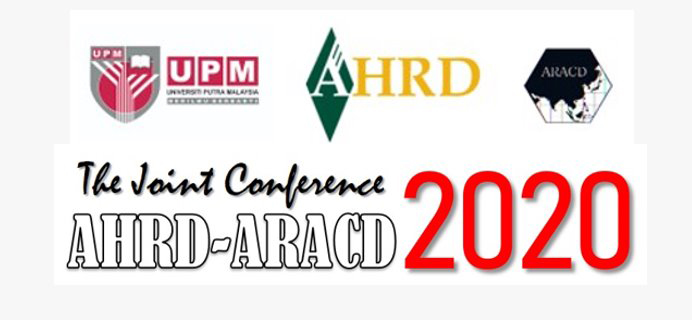Poster Submission
POSTERS
Posters offer the presenters an opportunity to have a synchronous interaction and substantive discussions with interested colleagues about their proposed research. Like other presentations, posters should represent work that has not been previously reported at a conference. All poster abstract submissions will be peer reviewed.
Submissions should include the following information:
- Title of proposed poster
- Abstract of proposed poster (no more than 750 words)
- Authors’ name(s) or other significant identifying information should not appear on the cover page and abstract narrative when submitted.
Poster Preparation:
- Each poster presenter will be able to display a poster with a maximum dimension of 36 inches x 42 inches (approximately 92 cm x 107 cm)
- We will provide materials for poster posting: pins for mounting posters or double-sided adhesive tape for attaching posters.
- We will not print copy handouts.
- Access to electrical outlets will not be available.
Please submit a pdf file of your poster to ahrd.aracd@upm.edu.my. If you are interested and want your poster to appear in the e-poster book. Also, for presenters’ convenience, we offer to print posters free of charge. Posters will be availble for pick up at the registration desk.
Design Considerations:
- Lettering should be simple, bold, and easily legible from a distance of 4ft (122 cm). Lettering for the title should be at least 1.5in (38mm) high. Under the heading, include the names of authors and their affiliations in smaller lettering.
- In the body text, keep the number of words to a minimum: please remember that this is not a paper. Arrange the elements in a logical sequence: introduction or statement of the problem or issue, objectives of the research or project, methodology used (where appropriate), major findings or outcomes, interpretations or significance of findings or outcomes, and conclusions. Use numbers, if necessary, to ensure that readers can follow the sequence.
- Illustrations and color will enhance the effectiveness of your presentation. Tables, figures, and photographs are encouraged. While you should consider graphic impact, note that simplicity and legibility are more important than artistic embellishments. The background of the poster may be any color, so long as there is a strong light-dark contrast between background and lettering.
- When working on the arrangement of your display on the poster, be aware that it is preferable to align materials in columns rather than rows. Audience members who are scanning posters have a much easier task if they can proceed from the left to right rather than having to skip around in the display.
If the poster is accepted, authors will resubmit the poster abstract with author information on the cover page. Poster titles will appear in the Conference program book and poster abstracts will appear in the Conference proceedings.
The following submission types are not blind reviewed, meaning the names of the presenters, participants, and organizers will be seen during the review process. Proposals are judged based on overall quality, innovativeness, and contribution. Space for these sessions is limited, and we anticipate a highly competitive selection process.
In terms of format, authors may either use business-style or traditional APA 6th formatting guidelines. Be sure that each of the requested elements for the type of session is addressed in the proposal (headings are helpful with this). If business formatting is used, please use APA 6th formatting for references and citations.
- Focus Session: Focus sessions allow the participant(s) to discuss a specific topic area in-depth. These might take the forms of colloquiums, expert panel discussions, or other kinds of session designs that foster scholarly exploration as related to a specific topic. Participant(s) should submit a proposal that provides:
- Abstract/description of the session (100 words maximum) and keywords that describe the session (maximum of three)
- Description of the session (including substantiation of the need for the session; description of the various perspectives offered by each participant/facilitator, and how these fit in the session format and intent; and description of how the session contributes towards the advancement of HRD (3,000 words maximum, including references)
- Relevant biographical information for the sponsor (if any) and for each participant, specifically highlighting expertise as related to the focus of the session (200 words maximum per person)
Scheduling in the Conference Program: Focus sessions will be scheduled as one 90- minute session that will be facilitated by the organizer(s) of the session.
- Innovative Sessions: Innovative sessions provide an opportunity for colleagues to share knowledge and expertise that fosters professional development of AHRD members around capabilities to support research, theory-building, and/or scholarly practice. These should be highly engaging and interactive sessions with clearly outlined learning objectives that can be achieved during the session. Note: AHRD Vietnam will not accept proposals for workshops that include descriptions of commercial products that the presenter is marketing.
Proposals for an Innovative session should include:
- Title of the session
- Name(s) of the Facilitator(s)
- Abstract/description of the workshop (100 words maximum) and keywords that describe the workshop (maximum of three)
- Clearly identified target audience for the Innovative session
- Substantiated need for this workshop for scholars and/or scholar-practitioners
- 3-5-page overview of the Innovative session (clearly outlining the learning objectives, the session’s flow, and time usage, and the specific ways the workshop will actively engage participants)
- Relevant biographical information for each facilitator, especially highlighting expertise as related to the focus of the workshop (200 words maximum per person).

